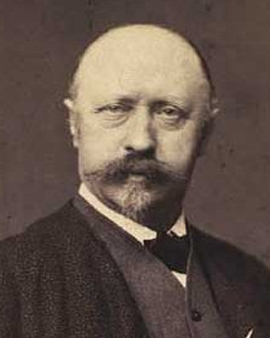Der dänische Landschaftsmaler Anton Melbye war für seine Zeitgenossen eine Berühmtheit. Diese Berühmtheit lässt sich vor allem auf seine einzigartigen Sehstücke, oder besser: Seestücke, zurückführen. Er malte mit kräftigem Pinselstrich und dunklen Farben emotional aufgeladene Meereslandschaften im Großformat, die zwischen Symbolismus und Naturalismus angesiedelt und von Licht durchflutet sind. Das trug ihm auch den Beinamen „Maler des Meeres“ ein. Eigentlich hatte Anton Melbye Seemann werden wollen. Er hatte deshalb auch den Beruf des Schiffszimmermanns erlernt, doch wegen einer Sehschwäche musste er seine Schwäche für die See auf andere Art und Weise ausleben. Wie zuvor schon sein Bruder trat er ein Malereistudium an der Königlich Dänischen Kunstakademie in Kopenhagen an. Er wurde Privatschüler von Christoffer Wilhelm Eckersberg, einem Vertreter der neuen „Kopenhagener Schule“. Der Lehrer forderte von Anton Melbye nicht nur ein intensives Naturstudium in der Theorie, sondern auch in der Praxis. So verbrachte der junge Anton viel Zeit mit Malen und Zeichnen in der freien Natur. Das dort Gesehene und Erlebte sollte jedoch nicht spontan, sondern perspektivisch, ja fast schon mathematisch exakt erfasst werden.
Nach einer gewissen Zeit von Lehrjahren wurde es für Anton Melbye Zeit, sich von Eckersberg und seinen sachlichen Lehren zu emanzipieren. Er entwickelte einen intuitiveren Naturzugang, indem er romantische Impulse aufnahm und in seine spontanen, lockeren Federzeichnungen einfließen ließ. Bei einem längeren Aufenthalt in Paris nahm er weitere künstlerische Strömungen auf. Befreit von akademischen, aber auch nationalen Restriktionen begann er mit Techniken zu experimentieren und neue künstlerische Ausdrucksweisen zu entdecken. In dieser Zeit besuchte er auch die Küste der Normandie. Während andere Freilichtmaler sich in ihrer Motivwahl dem damals gerade aufkommenden Badetourismus widmeten, galt sein Blick der Natur, der einsamen Küste und dem stetig bewegten Meer. Die Normandie sollte aber nur eine von vielen Reiseetappen sein. So folgte Melbye der französischen Marine ins östliche Mittelmeer, als diese dort – kurz vor Beginn des Krimkrieges zwischen dem osmanischen Reich, seinen Alliierten und Russland – ihre Flotte stationierte. Doch anstatt sich wie geplant dem Studium moderner Kriegsschiffe zu widmen, war er so fasziniert von der Exotik das Marmarameeres, dem intensiven Licht und der üppig wuchernden Vegetation, dass er sich stattdessen der Landschaftsmalerei und der Kohlezeichnung zuwandte.
Schließlich ließ Anton Melbye sich in Hamburg an der Binnenalster nieder. Denn seine repräsentativen Seelandschaften waren vor allem unter den wohlhabenden Bankiers und Reedern, Kaufleuten und Schiffbauern der Hansestadt begehrte Sammlerstücke. In Hamburg durchlebte er dann auch den deutsch-dänischen Krieg und schuf unter anderem ein Gemälde von der Seeschlacht vor Helgoland. Während beide Kriegsparteien den Ausgang der Schlacht als Sieg für sich verbuchten, versuchte der Künstler eine neutrale politische Haltung einzunehmen.
×





.jpg)
.jpg)
.jpg)
.jpg)
.jpg)
.jpg)
.jpg)
.jpg)
.jpg)
.jpg)
.jpg)
.jpg)
.jpg)
.jpg)
.jpg)
.jpg)
.jpg)
.jpg)
.jpg)
.jpg)
.jpg)
.jpg)
.jpg)
.jpg)
.jpg)
.jpg)
.jpg)
.jpg)
.jpg)
.jpg)
.jpg)
.jpg)
.jpg)
.jpg)
.jpg)
.jpg)
.jpg)
.jpg)
.jpg)
.jpg)
.jpg)
.jpg)
.jpg)
.jpg)
.jpg)
.jpg)
.jpg)
.jpg)
.jpg)
.jpg)
.jpg)
.jpg)
.jpg)
.jpg)
.jpg)
.jpg)
.jpg)
.jpg)
.jpg)
.jpg)
_-_(MeisterDrucke-1131105).jpg)
_-_(MeisterDrucke-1131105).jpg)
.jpg)
.jpg)
.jpg)
.jpg)
.jpg)
.jpg)
.jpg)
.jpg)
.jpg)
.jpg)
.jpg)
.jpg)
.jpg)
.jpg)






